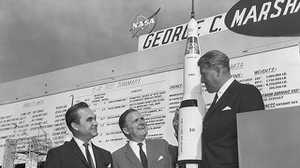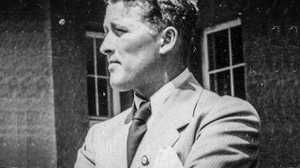The Women Who Brought Us the Moon
From the Collection: Women in American HistoryA diverse and potent force in space exploration, women at NASA who served as human computers were ultimately responsible for sending astronauts to the moon.
By Nathalia Holt
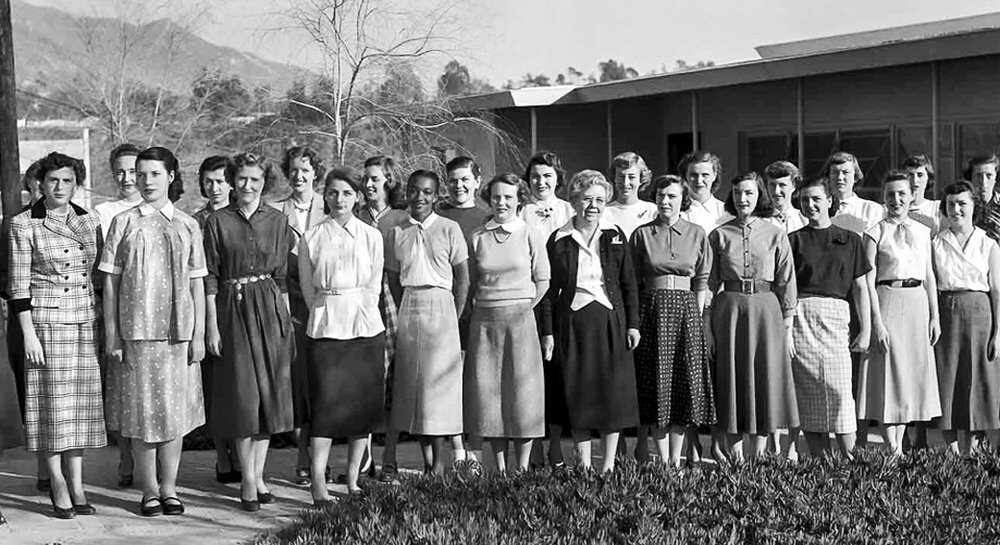
In 1965, Poppy Northcutt was the only female engineer at NASA’s Houston Mission Control. As she gazed at the men around her she thought to herself, I’m as smart as they are. Although she belonged among them, it was undeniably difficult to be the only woman in what sometimes felt like the domain of men.
As isolated as Northcutt felt in the historic control center, she was one of thousands of women who began their careers at NASA as computers. It was a job created before the advent of electronic machines, when human aptitude was required to perform all the mathematical calculations needed for experiments. Women have historically filled these positions, as exemplified by the groups of female computers who worked at the Harvard Observatory and the Royal Observatory Greenwich in the late 1800s. At NASA, these women came from all over the world, working at centers across the United States, and comprising a diverse and potent force in space exploration. Their calculations would ultimately be responsible for sending astronauts to the moon.
Unlike Northcutt, Sue Finley noticed the ubiquitous presence of female employees when she started work at the Jet Propulsion Laboratory in Pasadena, CA. Not only was her supervisor a woman, but all of her coworkers in the computing section were as well. It was January 31, 1958, and the country was on the precipice of historic achievement. That evening the laboratory would finally catch up with Sputnik 1 and 2, the world’s first satellites, launched by the Soviet Union in October and November of 1957. In mission control that night, it was one woman, Barbara Paulson, who tracked Explorer 1, America’s first satellite, as it left Earth’s atmosphere and entered space. When Paulson declared that the satellite had made it into Earth’s orbit, the room erupted in celebration. Although it would be another six months before NASA was officially formed, for those at the Jet Propulsion Laboratory the moon was already in their sights.
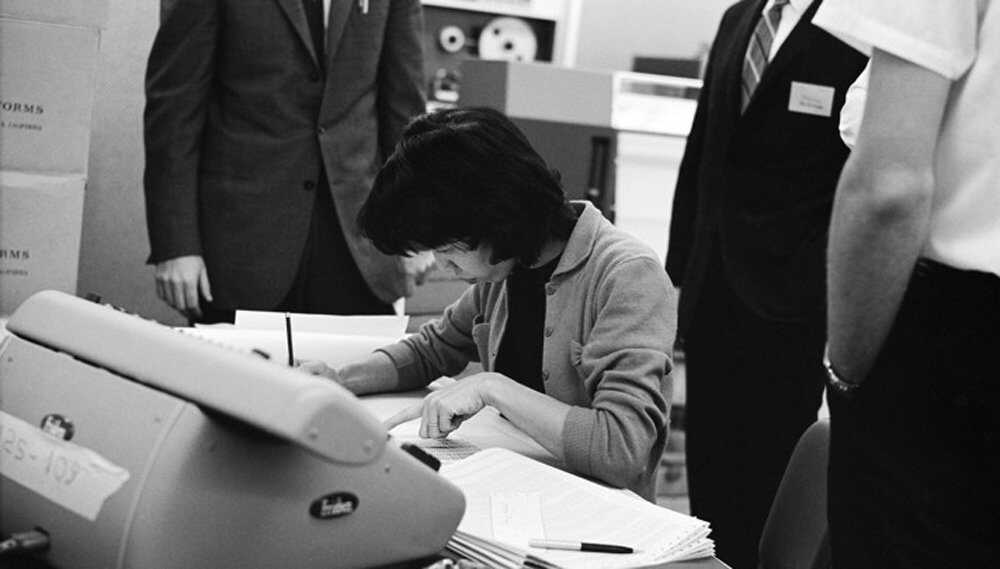
Finley began adapting their designs and trajectories in order to launch robotic lunar missions. Her team was focused on sending the first camera to the moon as part of the Ranger series of missions, from 1961-1965, whose goal was to obtain close up images of the lunar surface and select a landing site for Apollo. Next, they would send uncrewed spacecraft as part of the Surveyor, from 1966-1968, which gathered further data on temperature and surface substrate to aid in Apollo planning. In addition, Finley was part of the team designing an array of large radio antennas that they called the Deep Space Network, which would form a massive tracking and communications system.
The women working at the Jet Propulsion Laboratory in the 1960s were all highly trained mathematicians, and many possessed advanced degrees. Helen Ling was born in China and experienced a tumultuous childhood formed under the pressures of WWII. Coming to the United States for college, she earned her master’s degree in mathematics before leading the computing section in a managerial role for over three decades. There was also Janez Lawson, the first African American hired in a technical position at the laboratory. She held a bachelor’s degree in chemical engineering from UCLA and by modern qualifications would be hired today as an engineer. However, in the 1950s, her gender and race impeded her employment and she was brought in as a computer.
The most extensive group of African American computers in the United States was based at the Langley Memorial Aeronautic laboratory in Hampton, Virginia. While employees of different racial backgrounds worked beside one another at many NASA centers, for those employees working in the Jim Crow South, segregation remained in effect. African American women were initially grouped in a section labeled the “West Area Computers.” This separation meant that not only would they be paid far less than their white counterparts, but also that all working quarters, lunch areas and bathrooms were segregated by race.
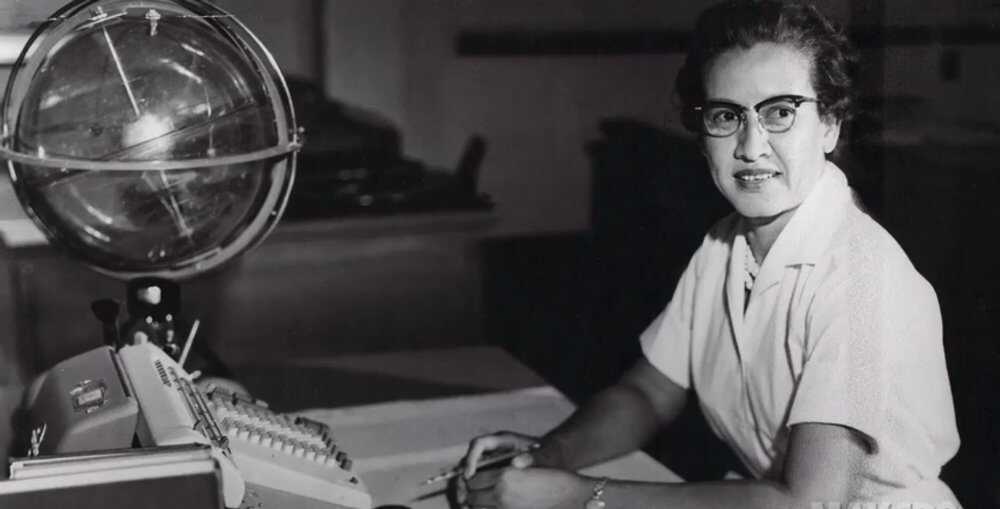
In a system designed to repress their advancement, the African American women became indispensable. “A Trojan horse of segregation opening the door to integration,” Margot Lee Shetterly wrote in Hidden Figures, her 2016 nonfiction book documenting the groundbreaking female African American computers at Langley and adapted into a feature film of the same name. In the book, Shetterly focuses her narrative on three human computers turned engineers: Katherine Johnson, who was awarded the Presidential Medal of Freedom in 2015, Dorothy Vaughan and Mary Jackson. While their careers spanned decades, their contributions to early human spaceflight are most frequently lauded.
It was John Glenn himself, one of the original astronauts known as the Mercury Seven, who asked for Katherine Johnson. “Have the girl check the numbers,” he said prior to his Friendship 7 launch. “If she says the numbers are good…I’m ready to go.” Johnson not only checked the numbers, she also designed the trajectory for his record breaking 1962 orbit around the Earth. Next, her mathematics would take on new importance as she bent her trajectories beyond the Earth’s gravitational pull, all the way out to the moon.
In 1962, when President John F. Kennedy said, “We choose to go the moon in this decade, and do other things, not because they are easy, but because they are hard,” he was speaking to the heart of NASA operations across the country. At the Cleveland Flight Propulsion Laboratory in Ohio, the group of female computers was focused on developing rockets powerful enough to break the chains of gravity and function in the vacuum of space. To accomplish this, NASA needed multistage, or stacked, rockets, with the lower part of the rocket providing plenty of thrust, before falling off, back towards Earth, and the upper part of the rocket designed to give the final boost necessary to send astronauts to the moon. Chief among the female programmers at the laboratory in Ohio was Annie Easley, an African American woman with her bachelor’s degree in mathematics from Cleveland State University.
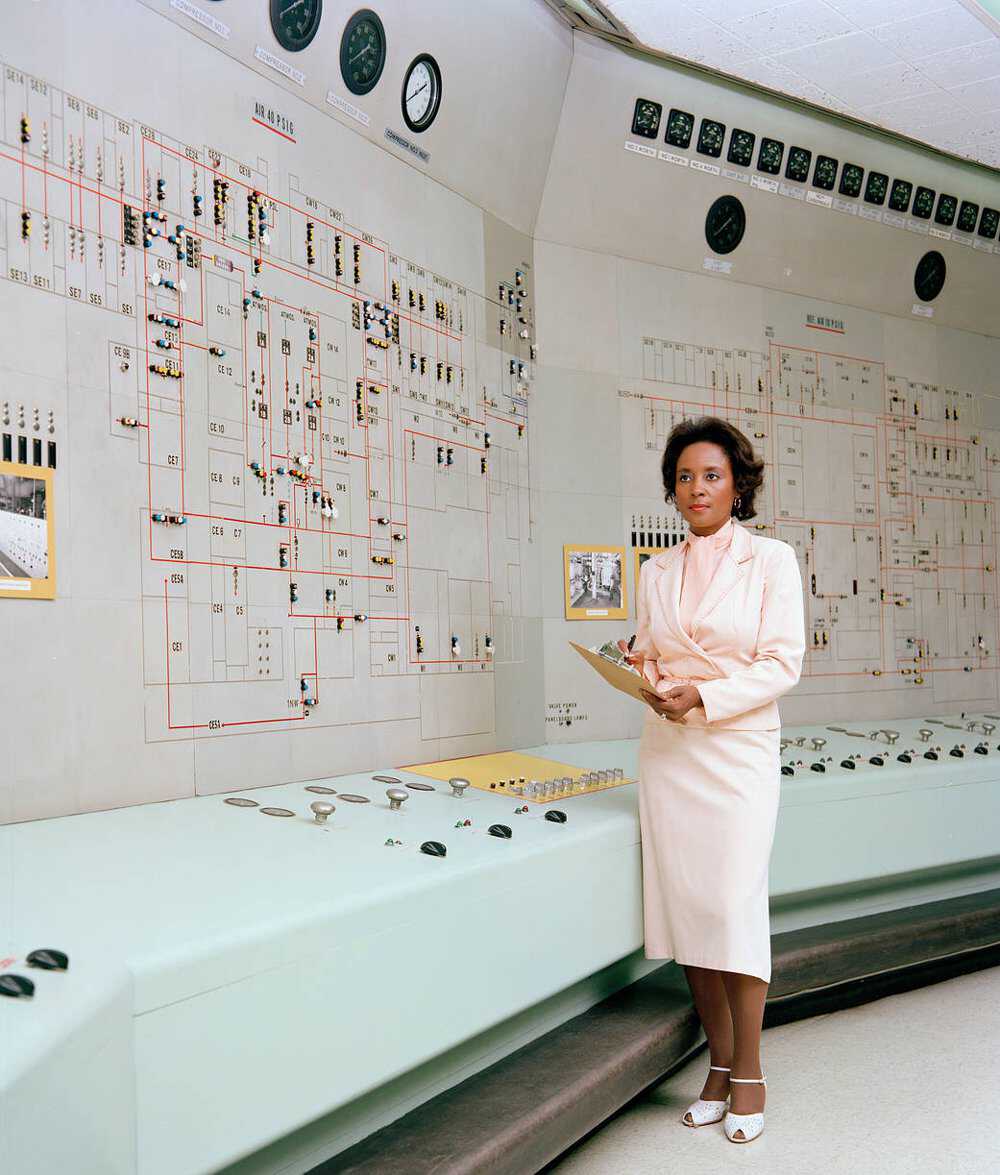
Like Northcutt in Houston, Finley in California, and Johnson in Virginia, Easley started as a computer. By the mid-1960s, however, the world of human computers was in a vast state of upheaval, both in the development of electronic computers at IBM, now more powerful and flexible in their programming, and in the shifting perceptions instigated by the women’s movement in the United States. As part of this social and technological revolution, female computers such as Easley were no longer calculating by hand, but were now responsible for writing the space agency’s earliest computer programs. Easley was programming the Centaur rocket engines, whose technology would be incorporated into the upper stage rocketry that would form a critical component for Apollo.

Rockets might be able to get astronauts to the moon, but they still needed to find a place to land. At the Marshall Space Flight Center in Huntsville, Alabama, a laboratory under the direction of the controversial Nazi turned American rocket scientist Wernher von Braun, the team was tackling this challenge. Like at other NASA centers across the country, the flight center team was comprised of a talented group of female mathematicians, including Jeanette Scissum, an African American scientist who joined the center as an entry-level mathematician in 1964. Scissum was developing a computer program capable of selecting landing locations for the Apollo lunar module. It was her work, and that of her team, that ultimately selected a flat region at the Sea of Tranquility for Apollo 11.
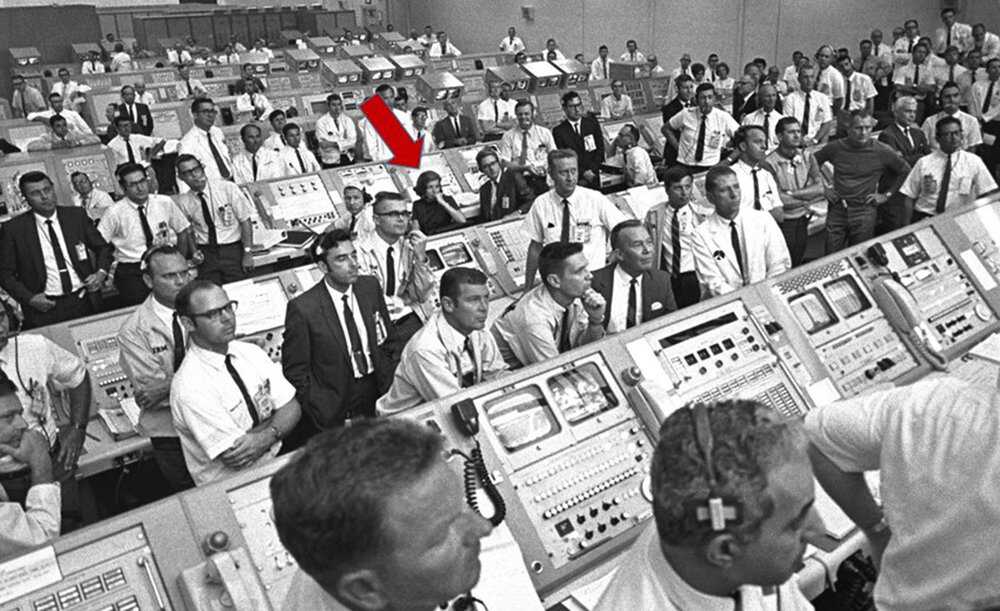
At Cape Kennedy in Florida, the pieces of Apollo 11 were being assembled. Born from the calculations of female hands across the country, the multiple staged rockets were hoisted by cranes in the final assembly area before the payload, containing the lunar, service and command modules, was fitted on top. Waiting in anticipation was JoAnn Morgan, a twenty-eight year old instrumentation controller who had worked at Cape Kennedy since NASA’s inception in 1958.
Like Poppy Northcutt in Houston, Morgan was accustomed to being the only woman in the control room in Cape Kennedy. While she had worked on all the previous Apollo launches, Apollo 11 would mark the first time she was allowed to sit at the console. The opportunity to be in command of the guidance computers for Apollo 11 was undeniably exciting. Yet she worried about the attention she would receive. She knew media photographers would be documenting their progress and she didn’t want to stick out in the crowd of men. A previous Apollo mission had taught her how inappropriate journalists could be, when a cameraman making his way down her row had said to one of her colleagues, “I wish you could let her go out and put on some lipstick.”
Morgan was not thinking of lipstick on the morning of July 16, 1969, when Apollo 11 launched from Cape Kennedy. Thirty minutes prior to blastoff, she and her colleagues were locked into the firing room, a standard precaution during an Apollo launch. The Florida sky was a flawless blue as the rocket bolted out of sight, entering Earth’s orbit twelve minutes later, as expected. What happened next, however, was not planned.
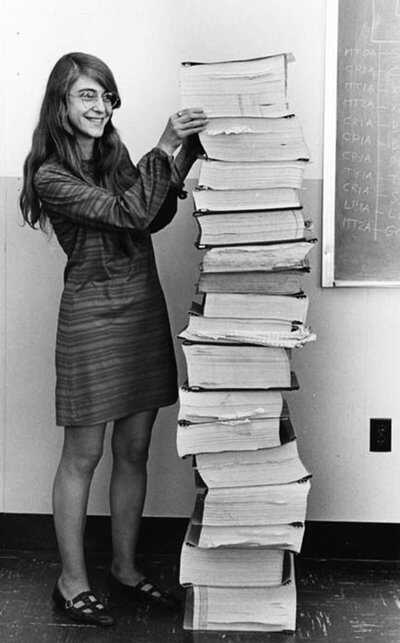
Four days later, on July 20, the Eagle, the Apollo lunar module, began its descent towards the lunar surface. Just minutes from landing, the computers onboard overloaded. “Give us a readout on that 1202 program alarm,” said Neil Armstrong, sitting next to Buzz Aldrin in the small cabin. The astronauts had no inkling what action had tripped their alarm. The flight controllers at Houston Mission Control were racing to understand the problem. They determined that the computers were burdened from trying to complete too many functions at once. In Houston they made a critical decision: instead of aborting the mission, they placed their trust in the Apollo onboard software written by Margaret Hamilton, director of Apollo flight computer programming, and her team at the Draper laboratory at MIT. Ultimately, MIT’s code saved the day, overriding all other functions in order to make landing the priority. “If the computer hadn't recognized this problem and taken recovery action, I doubt if Apollo 11 would have been the successful Moon landing it was,” Hamilton would later write.
Six and a half hours after the Eagle made its fraught landing, Neil Armstrong, with the eyes of the world watching, made his historic first step on the lunar surface. “That’s one small step for man, one giant leap for mankind,” Armstrong would famously say as he descended from the Eagle’s ladder. Yet the moment was not made by men alone. Instead, it was the work of thousands of men and women, of all different races, nationalities and backgrounds, who were working together to bring about one of humanity’s greatest achievements.
For the women of NASA, their work was in many ways just beginning. The decades that followed would be filled with new explorations as they returned spacecraft not only to the moon, but also to the edges of our solar system. For some pioneering female engineers, new missions still lie ahead.
Sue Finley, who started in 1958, before NASA’s formation, is still working for the space agency today. At age 83 and with a career spanning six decades, she is NASA’s longest serving female employee. She has witnessed a dizzying array of changes, both technologically and socially. Her work has sent rovers to Mars; sent ships to every planet of our solar system; yielded new data and stunning images of Jupiter, Saturn, and Pluto; and even launched spacecraft all the way into interstellar space. Yet few outside her laboratory are aware of the pivotal role Finley has played in space exploration. It is only in the past few years that her contributions, and those of her fellow female colleagues at NASA, have begun to receive the acknowledgement they deserve. On the anniversary of Apollo 11, as we recognize the men whose accomplishments have long been lauded, it’s worth remembering the many women who brought us the moon.

Nathalia Holt is the New York Times bestselling author of Rise of the Rocket Girls.
Sources
“Women in Space.” MAKERS. (Video)
“Women Computers.” Astronomical Photographic Plate Collection. Harvard College Observatory.
“The Royal Observatory Greenwich: a Brief History”
Nathalia Holt, “The Woman Who Helped Us Hear Juno.” Popular Science.
“Meet The ‘Rocket Girls,’ The Women Who Charted The Course To Space.” NPR.
“Ranger to the Moon (1961 - 1965).” NASA Space Science Data Coordinated Archive.
“Surveyor to the Moon (1966 - 1968).” NASA Space Science Data Coordinated Archive.
“Deep Space Network.” NASA Jet Propulsion Laboratory.
Naomi Shavin, “NASA’s “Rocket Girls” Are No Longer Forgotten History.” Smithsonian.
Nathalia Holt, “How Sexism Held Back Space Exploration.” The Atlantic.
Elizabeth Howell, "The Story of NASA’s Real ’Hidden Figures.’” Scientific American.
Sarah McLennan and Mary Gainer, “When the Computer Wore a Skirt: Langley’s Computers, 1935–1970.” NASA History Program Office News & Notes, Vol. 29, No. 1, First Quarter 2012.
Margot Lee Shetterly, Hidden Figures. Harper Collins. 2016.
“Katherine Johnson, NASA Mathematician.” MAKERS. (Video)
Margot Lee Shetterly, “Dorothy Vaughan Biography.” NASA.
Margot Lee Shetterly, “Mary Jackson Biography.” NASA.
Robert Z. Pearlman, “‘Hidden Figures’: When Did John Glenn Ask for ‘the Girl’ to Check the Numbers?” Space.com.
John F. Kennedy, Speech. September 12, 1962. Rice Stadium. Software, Robotics, and Simulation Division. NASA.
“Multi-Stage Rocket.” NASA Glenn Research Center Explorers Posts. NASA.
Anne K. Mills. “Annie Easley, Computer Scientist.” NASA.
“Biography of Wernher Von Braun.” NASA.
Lee Mohon (ed.), “Jeanette A. Scissum, Scientist and Mathematician at NASA Marshall.” NASA.
“Biography of JoAnn H. Morgan.” NASA.
David Kamp, “Tracking Down JoAnn Morgan, a Semi-Hidden Figure of U.S. Space History.” Vanity Fair.
Jason Davis, “NASA releases 19,000 hours of audio from historic Apollo 11 mission.” NBC News.
Nicholas P. Russo, “Margaret Hamilton Awarded Presidential Medal of Freedom.” NASA.
"In Their Own Words: Margaret Hamilton’s ’Computer Got Loaded.’” Hack the Moon.
Lacey Russell, “NASA engineer, 81, has worked at agency longer than any woman.” CNN.
Published June 3, 2019.






